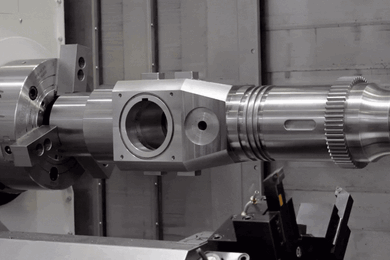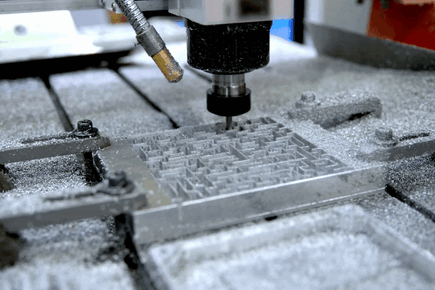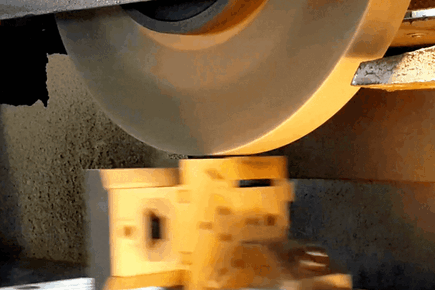Turkey's custom metal fabrication and stainless steel fabrication service.
We offer a wide range of custom metal fabrication and stainless steel fabrication metal services in Turkey.
Machining
Machining
Machining, one of the basic elements of industrial
production, is an important method used for shaping and processing metal parts.
This method is realized by chip removal in producing parts through metalworking
machines. Machining operations are performed using different methods, such as
turning, milling, drilling, and grinding. Turning allows the part to be shaped
by moving a cutting tool on a rotating part. Milling shapes the surface of the
workpiece by moving a rotating cutting tool. Drilling is used to making holes
in the workpiece while grinding is used to smooth worn surfaces or to refine
parts. At the heart of these processes are metalworking machines. Computerized
numerical control (CNC) systems increase the automation and precision of
machining, enabling the production of more complex parts. CNC machines process
parts through predetermined programs, resulting in higher precision,
repeatability, and efficiency.
What is Machining?
Machining is a production method used for shaping and
processing metal parts. In this method, the parts’ shape, size, and surface are
brought to the desired specifications using metalworking machines. Machining is
usually carried out by chip removal.
In this process, metalworking machines are manufactured by
removing metal chips from the parts using cutting tools. Different processes,
such as turning, milling, drilling, and grinding, are part of machining.
Turning allows the part to be shaped by moving a cutting tool on a rotating
part. Milling shapes the surface of the workpiece by moving a rotating cutting
tool. Drilling is used to drilling holes in the workpiece while grinding is
used to smooth worn surfaces or to refine parts.
Another important aspect of machining is using computerized
numerical control (CNC) systems. CNC machines process parts through
predetermined programs, providing higher precision, repeatability, and
efficiency. This makes it possible to produce complex parts.
What Materials Can Be Machined?
Machining is commonly used to manufacture metal objects,
parts, and tools. Metals that can be machined are stainless steel, aluminum,
brass, titanium, and copper. Stainless steel is commonly used for precision
machining, offering the advantages of strength and resistance to corrosion.
Aluminum is lightweight, easy to work with, and inexpensive. Brass is another
economical material used for machining, but it should not be used in
semiconductor products because of the zinc and tin in the material. Titanium is
strong, lightweight, and resistant to corroding. However, it is more expensive
than other materials and difficult to work with. Copper is a versatile, strong
metal that works well as an electrical conductor. Plastics are also used in
machining as they are inexpensive and non-conductive. They are commonly used in
medical, electrical, and scientific industries.
What are the different types of machining?
Various prototype machining techniques have been around for
decades, but most fall into three principal processes:
Turning
Turning or Lathing involves rotating the workpiece on the
machine while a single-edged cutting tool remains stationary. The cutting tool
removes material by slowly moving parallel to the workpiece’s rotational axis.
Drilling
Drilling creates a round hole by rotating a cylindrical tool
parallel to the workpiece’s axis of rotation. The formed hole is equal to the
diameter of the tool.
Milling
Milling is the process of removing material, using rotary
cutters, from a workpiece in a feed motion perpendicular to the rotational axis
of the cutting tool. Miling is one of the most common forms of machining used
today.
What are some advantages of machining?
- Choice of a variety of finishes and materials
- Tighter tolerances down to .001″
- Real materials that have real densities
What are some disadvantages of machining?
- Only works from one side at a time. The object needs to be turned and repositioned manually
- Requires a skilled machinist
- Materials and time to machine can be expensive



